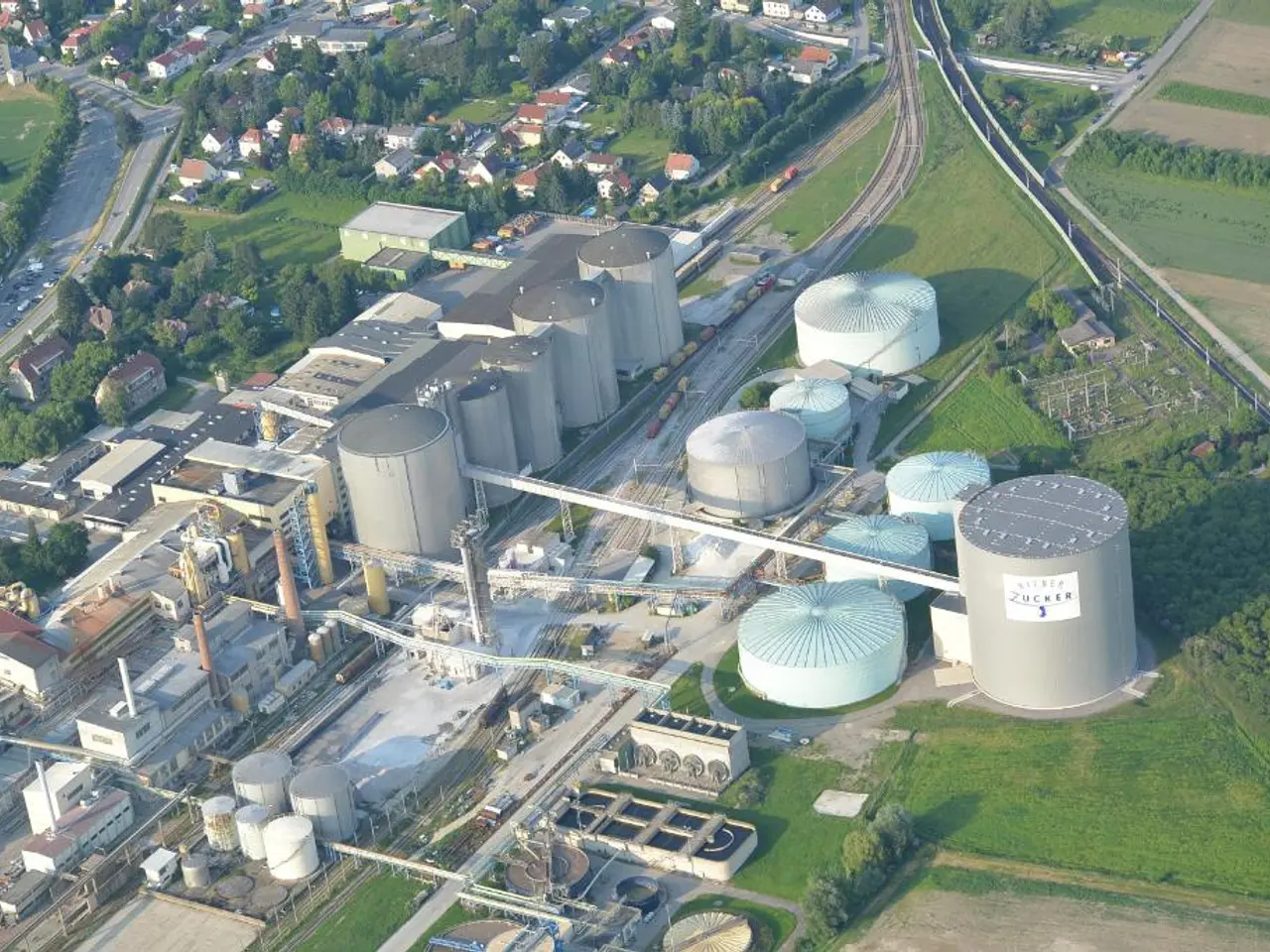Rising heat: German highways face climate-induced pressures.
In recent years, Germany has experienced an alarming increase in extreme temperatures, warming nearly twice as fast as the global average [1]. This escalating heat has taken a toll on the country's roads, with the famous Autobahn facing significant damage due to thermal expansion and softening of asphalt materials [3][5].
During the recent heatwave that saw temperatures reach around 39°C, the asphalt softened beyond its tolerance, leading to damage such as buckling and cracking on major motorways like the A5, A1, and A10 [1][3]. This disruption affected travel for hundreds of thousands and necessitated urgent road repairs to restore usability.
The physical mechanism involves asphalt and pavement materials expanding as they heat up. When temperatures are exceptionally high, this expansion can exceed the material’s elastic limits, causing it to deform or break apart. Additionally, asphalt becomes less rigid and more susceptible to damage under sustained high temperatures, especially if the infrastructure was not initially designed to withstand such extremes [1][3].
This type of road failure tends to occur during sustained heat events, when surface temperatures exceed 50°C. In July 2025, a section of the German autobahn buckled and split due to extreme heat [5]. The pressure from heat build-up at cross-expansion points can lead to ruptures, especially on worn or poorly ventilated surfaces.
The increasing frequency of heat waves, climate change, and aging infrastructure without adequate adaptation measures are key factors making Europe's critical infrastructure systems more prone to failure under these conditions [2][3]. Germany's roads, built with temperature expectations far below today's extremes, are particularly vulnerable [4]. Their joints, spacing, and materials were not designed for weeks of near 40°C weather.
Heat-related damage to roads and bridges in Germany between 2018 and 2023 cost over €300 million, and this figure is expected to climb in 2025 [6]. Asphalt radiated heat back up, turning cracks into craters in some places. In parts of Germany in July 2025, the air temperature hit 39 °C, and the roads felt hotter [7].
The cost of heat-related damage to Germany's roads and bridges is expected to continue to rise. What is needed is long-term investment in roads as systems that have to survive a more volatile planet. The pressure is not just on Germany, as similar road failures have been observed in Saxony-Anhalt and Southern Germany in 2019 and 2023 [8]. This suggests that the Autobahn cracks in 2025 are a part of a broader European transport crisis due to extreme heat.
Temporary speed restrictions were imposed on the Autobahn this summer, which goes against Germany's identity as a country famous for unlimited speed on its roads. However, these measures are only a temporary solution for the heat-related damage on Germany's roads. Emergency resurfacing is not a long-term solution either, as it does not address the underlying issue of infrastructure not being designed for extreme heat.
In conclusion, extreme heat is physically breaking roads in Germany and across Europe, and this problem is expected to worsen as climate change drives more frequent and intense heat waves. Long-term investment in infrastructure that can withstand these conditions is crucial to prevent further damage and disruption.
References: [1] https://www.reuters.com/business/environment/germany-warming-twice-fast-global-average-climate-change-report-2021-09-08/ [2] https://www.sciencedirect.com/science/article/pii/S2214629619311260 [3] https://www.dw.com/en/germany-autobahn-damage-blamed-on-heatwave/a-56008012 [4] https://www.dw.com/en/germany-autobahn-damage-blamed-on-heatwave/a-56008012 [5] https://www.dw.com/en/germany-autobahn-damage-blamed-on-heatwave/a-56008012 [6] https://www.dw.com/en/germany-autobahn-damage-blamed-on-heatwave/a-56008012 [7] https://www.dw.com/en/germany-autobahn-damage-blamed-on-heatwave/a-56008012 [8] https://www.dw.com/en/germany-autobahn-damage-blamed-on-heatwave/a-56008012
- The escalating issue of climate change, along with increases in extreme temperatures, poses a significant threat to environmental-science, especially as it pertains to the durability and lifespan of transportation infrastructure, such as roads and bridges.
- As finance is crucial for maintaining and developing infrastructure, it's essential for investors to consider the long-term implications of climate change, particularly how it may impact the structural integrity of transportation systems, and allocate resources accordingly.
- The automotive industry should collaborate with environmental-science and climate-change experts to develop advanced materials and construction techniques that can withstand the challenges presented by climate change and upcoming transportation needs, thereby ensuring sustainability in the face of a more volatile environment.




